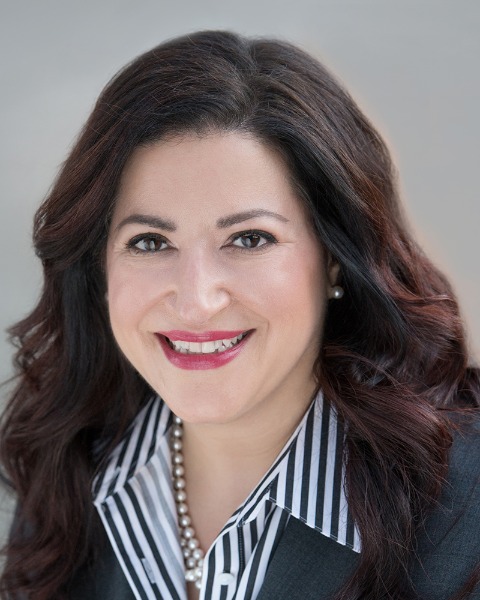Back
S3: Plenary Session 3
RS09 - Abdominal Aortic Dissection is the Predominant Form of Abdominal Aortic Pathology in Vascular Ehlers-Danlos Syndrome
Thursday, June 16, 2022
8:23 AM – 8:30 AM EDT

Veda Gadiraju, BA
Seattle, Washington
- AE
- SW
- PB

Sherene Shalhub, MD
Associate Professor of Surgery
University of Washington
Seattle, Washington
Presenting Author only(s)
Co-Author(s)
Submitting Author only(s)
Objectives: Vascular Ehlers-Danlos Syndrome (VEDS) is a known risk factor for heritable aortic pathology. However, there is a paucity of data on the characteristics of abdominal aortic pathology in this population. We address this knowledge gap by investigating the presentation, management, and outcomes of abdominal aortic pathology in patients with VEDS.
Methods: A cross sectional study of individuals enrolled in the VEDS Collaborative Research study, a global natural history study, between 6/24/2019 and 12/31/2021. Available medical records were reviewed for individuals with pathogenic and likely pathogenic variants in COL3A1. Demographics, type of COL3A1 variant, aortic pathology, surgical repairs, and survival were abstracted and analyzed.
Results: To date, 345 individuals with pathogenic/likely pathogenic COL3A1 variants have been enrolled (40.5% male, mean age 39+16 years, mean age at diagnosis 31+17 years). Among this cohort, 33 (9.5%) had abdominal aortic pathology (54.5% male). The median age of aortic pathology diagnosis was 40.5 (IQR 32-52) years with no sex-differences in age of the diagnosis. The most common type of COL3A1 variant was missense (n=17) and null (n=10). Nearly half (48.5%) were symptomatic leading to the diagnosis while the rest were diagnosed incidentally or on surveillance imaging. Aortic dissection was present in 79% of the cases (2 type A, 4 type B limited to the descending thoracic aorta, 13 type B isolated abdominal aortic dissection, and 6 extent unknown). The median diameter was 30 (25.3-43.2) cm and abdominal aortic aneurysm (>3.5 cm) was present in 13 cases. The morphology of the aneurysm involved sparing of the proximal infrarenral abdominal aorta with aneurysm formation immediately proximal to the iliac bifurcation. Iliac artery aneurysm or dissection was present in 22 (66.7%) of the cases. Surgical repair was performed in 24.2% of the cases (open repair in 7 cases, endovascular repair in 1 case). For open surgical repair, estimated blood loss varied between 2000-5000 ml. There was one intraoperative mortality during attempted rupture repair and one case had a long term complication of an incisional hernia. The endovascular repair case was complicated by femoral artery dissection and distal embolization. Aortic rupture occurred in 10 cases, 4 were associated with mortality.
Conclusions: Abdominal aortic dissection is the predominant form of abdominal aortic pathology in VEDS and can be associated with aneurysmal degeneration, frequently limited to the distal aspect of the infrarenral abdominal aorta. This configuration should raise the suspicion for VEDS diagnosis. Open surgical repair appears to be tolerated.
Methods: A cross sectional study of individuals enrolled in the VEDS Collaborative Research study, a global natural history study, between 6/24/2019 and 12/31/2021. Available medical records were reviewed for individuals with pathogenic and likely pathogenic variants in COL3A1. Demographics, type of COL3A1 variant, aortic pathology, surgical repairs, and survival were abstracted and analyzed.
Results: To date, 345 individuals with pathogenic/likely pathogenic COL3A1 variants have been enrolled (40.5% male, mean age 39+16 years, mean age at diagnosis 31+17 years). Among this cohort, 33 (9.5%) had abdominal aortic pathology (54.5% male). The median age of aortic pathology diagnosis was 40.5 (IQR 32-52) years with no sex-differences in age of the diagnosis. The most common type of COL3A1 variant was missense (n=17) and null (n=10). Nearly half (48.5%) were symptomatic leading to the diagnosis while the rest were diagnosed incidentally or on surveillance imaging. Aortic dissection was present in 79% of the cases (2 type A, 4 type B limited to the descending thoracic aorta, 13 type B isolated abdominal aortic dissection, and 6 extent unknown). The median diameter was 30 (25.3-43.2) cm and abdominal aortic aneurysm (>3.5 cm) was present in 13 cases. The morphology of the aneurysm involved sparing of the proximal infrarenral abdominal aorta with aneurysm formation immediately proximal to the iliac bifurcation. Iliac artery aneurysm or dissection was present in 22 (66.7%) of the cases. Surgical repair was performed in 24.2% of the cases (open repair in 7 cases, endovascular repair in 1 case). For open surgical repair, estimated blood loss varied between 2000-5000 ml. There was one intraoperative mortality during attempted rupture repair and one case had a long term complication of an incisional hernia. The endovascular repair case was complicated by femoral artery dissection and distal embolization. Aortic rupture occurred in 10 cases, 4 were associated with mortality.
Conclusions: Abdominal aortic dissection is the predominant form of abdominal aortic pathology in VEDS and can be associated with aneurysmal degeneration, frequently limited to the distal aspect of the infrarenral abdominal aorta. This configuration should raise the suspicion for VEDS diagnosis. Open surgical repair appears to be tolerated.
